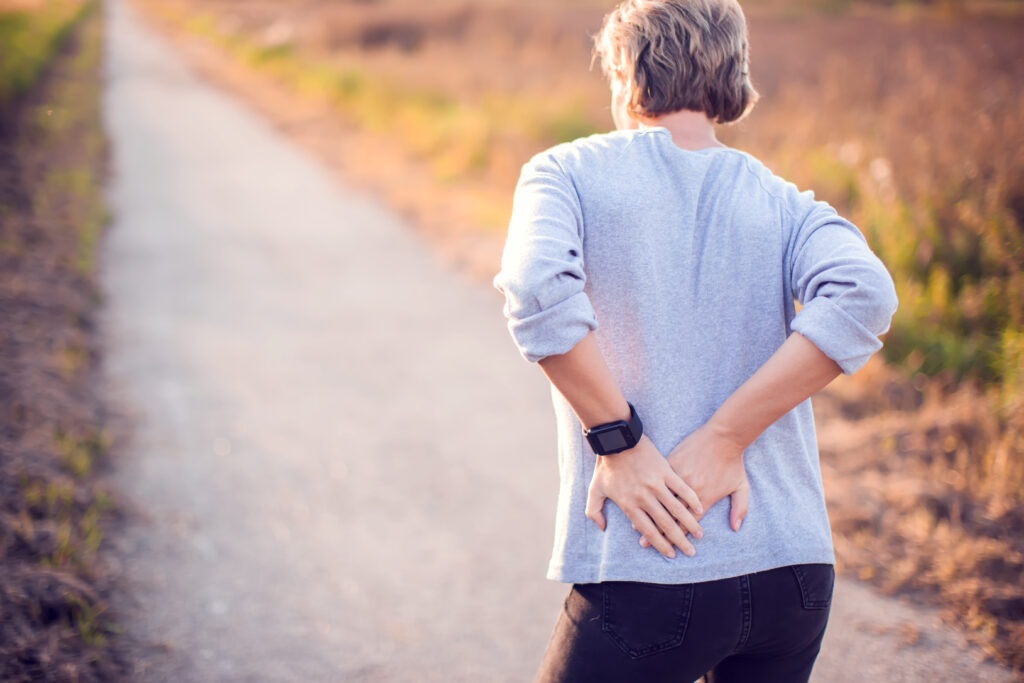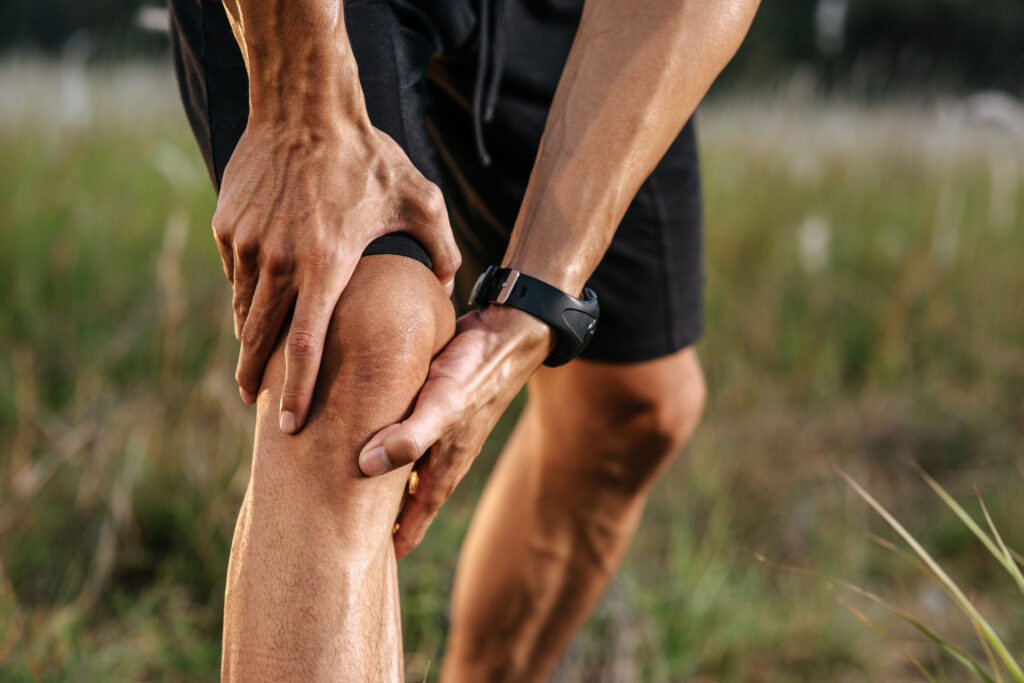If you're experiencing lower back pain, you're not alone, and finding gentle relief is entirely possible. You might be surprised to learn that simple lifestyle adjustments and therapeutic techniques can greatly ease your discomfort. From gentle stretching to mindful relaxation practices, these solutions can empower you to regain control over your well-being. However, understanding which methods truly work for your unique situation is key. What are the best approaches to explore first, and how can you incorporate them into your daily routine?
Understanding Lower Back Pain
Lower back pain is a common issue that affects millions of people daily, often stemming from various causes like muscle strain, poor posture, or underlying medical conditions. Understanding the nature of your lower back pain is vital for finding effective relief.
You might feel a dull ache, sharp stabbing sensations, or even stiffness. These sensations can vary greatly depending on the underlying cause.
When you think about muscle strain, consider how you've lifted heavy objects improperly or spent long hours sitting at a desk. Poor posture can also contribute. If you're slouching or leaning forward, your back muscles work harder than they should, leading to discomfort.
Additionally, certain medical conditions like herniated discs or arthritis might be at play, causing persistent pain.
It's essential to listen to your body. If the pain persists or worsens, don't hesitate to consult a healthcare professional. They can provide a proper diagnosis and help you understand what's happening.
You might find that keeping track of your symptoms, noting when they occur, and what activities exacerbate them can be beneficial during your consultations.
Lifestyle Modifications
How can lifestyle modifications help alleviate your lower back pain? By making small yet impactful changes to your daily routine, you can considerably reduce discomfort and improve your overall wellbeing.
One of the first steps is to evaluate your posture. Whether you're sitting at a desk or standing, maintaining a neutral spine can relieve strain on your back. Consider using ergonomic furniture or tools to support your body properly.
Another critical aspect is your activity level. While it might be tempting to rest when your back hurts, staying active is essential. Incorporate low-impact activities like walking or swimming into your routine. These can help strengthen your core muscles, supporting your spine naturally.
Additionally, pay attention to how you lift objects. Always bend at the knees and keep items close to your body to avoid unnecessary pressure on your back.
Diet plays a role too. Eating a balanced diet rich in anti-inflammatory foods can help reduce pain. Stay hydrated, as dehydration can exacerbate muscle tension. If you smoke, quitting can also make a difference; smoking restricts blood flow, which can hinder healing.
Lastly, verify you're getting enough sleep. Invest in a supportive mattress and pillow to maintain proper alignment during the night.
Gentle Stretching Exercises
Gentle stretching exercises can be a game changer for relieving lower back pain.
These stretches not only improve flexibility but also strengthen the muscles that support your spine.
Let's explore some effective techniques you can easily incorporate into your routine.
Benefits of Stretching
Stretching offers numerous benefits that can markedly alleviate lower back pain and improve overall mobility. By incorporating gentle stretching into your routine, you can enhance flexibility in your muscles and joints, which helps reduce stiffness and discomfort in your lower back. When you stretch regularly, you promote blood flow to the affected areas, aiding in recovery and easing tension.
Additionally, stretching can help you develop better posture. Poor posture often contributes to back pain, but by focusing on your body alignment through stretching, you can strengthen the muscles that support your spine. This leads to a more stable posture, reducing strain on your lower back.
Moreover, stretching encourages mindfulness and relaxation. Taking time to stretch allows you to connect with your body and release built-up stress, which can exacerbate pain. You'll find that as you relax, your muscles can release tension, further alleviating discomfort.
Lastly, regular stretching can increase your range of motion, making daily activities easier and more enjoyable.
Recommended Stretching Techniques
Incorporating gentle stretching exercises into your routine can greatly enhance your lower back health. These stretches help alleviate tension, improve flexibility, and promote overall well-being.
One of the best stretches is the Child's Pose. Kneel on the floor, sit back on your heels, and stretch your arms forward, feeling the gentle elongation in your lower back.
Another effective stretch is the Cat-Cow stretch. Begin on your hands and knees, arch your back upward while tucking your chin to your chest, then lower your belly while lifting your head. This dynamic movement helps increase circulation and releases tightness.
You might also try the Seated Forward Bend. Sit on the floor with your legs extended, and slowly lean forward, reaching for your toes. Hold this position for a few breaths, allowing your lower back to relax.
Lastly, consider the Piriformis stretch. Lie on your back, cross one leg over the other, and gently pull the uncrossed leg towards your chest. This targets the muscles around your hips and lower back.
Always listen to your body and stop if you feel pain. Regularly practicing these stretches can lead to significant relief and improved mobility.
Heat and Cold Therapy
When you're dealing with lower back pain, heat and cold therapy can be your best friends in finding relief. Each method serves a different purpose, so knowing when and how to use them effectively is key to managing your discomfort.
Heat therapy works wonders for muscle relaxation and increased blood flow. You can use a heating pad, hot water bottle, or even a warm towel. Applying heat for about 15-20 minutes can help alleviate stiffness and soothe tight muscles.
However, remember not to use heat on an acute injury, as it can worsen inflammation.
On the other hand, cold therapy is great for reducing swelling and numbing sharp pain. Ice packs or cold packs applied to your lower back for 15-20 minutes can help tame that throbbing ache. It's especially effective right after an injury or during a flare-up.
Just be sure to wrap ice in a cloth to protect your skin.
Alternating between heat and cold can also be beneficial. Start with cold therapy to reduce inflammation, then switch to heat to promote circulation and ease tension. This combination can greatly enhance your comfort levels.
Ultimately, both heat and cold therapy are simple, effective ways to manage your lower back pain. Experiment with them to see which offers the most relief for your specific situation.
With a little trial and error, you'll find the right balance to help you feel better.
Mindfulness and Relaxation Techniques
When it comes to managing lower back pain, mindfulness and relaxation techniques can be incredibly effective.
You can experience relief through simple practices like breathing exercises, guided imagery, and body scan meditation.
These methods not only help ease tension but also promote a sense of calm and awareness in your body.
Breathing Exercises Benefits
Breathing exercises can greatly alleviate lower back pain by promoting mindfulness and relaxation techniques. When you focus on your breath, you not only reduce muscle tension but also enhance your overall sense of well-being.
Deep, intentional breathing helps calm your nervous system, allowing your body to release stress that might contribute to pain. As you practice these exercises, you'll notice an improvement in your body's flexibility and range of motion.
By engaging in deep belly breathing, you fill your lungs fully, maximizing oxygen intake. This increased oxygen flow nourishes your muscles and can help them function better.
Additionally, breathing exercises encourage you to be present in the moment, shifting your focus away from the pain. This mindfulness reduces anxiety and teaches you how to manage discomfort more effectively.
You can incorporate these exercises into your daily routine, whether sitting, standing, or lying down.
Guided Imagery Practice
Building on the mindfulness gained through breathing exercises, guided imagery can further enhance your relaxation and pain management strategies. This technique involves visualizing peaceful scenes or experiences, helping you shift your focus away from the discomfort in your lower back.
To practice guided imagery, find a comfortable position, close your eyes, and take a few deep breaths. Picture a serene environment, like a quiet beach or a lush forest. Imagine the sounds, smells, and sensations associated with this place. As you immerse yourself in this imagery, allow your body to relax, releasing tension from your muscles.
You can also use guided imagery recordings or apps that lead you through various scenarios. These resources can provide structure and help you stay focused.
As you consistently practice, you'll likely find it easier to access this state of relaxation, especially during painful episodes.
Body Scan Meditation
Body scan meditation is a powerful technique for cultivating mindfulness and deep relaxation, especially beneficial for managing lower back pain. This practice encourages you to tune into your body, promoting awareness of areas that may hold tension or discomfort.
To begin, find a comfortable position, either lying down or seated. Close your eyes and take a few deep breaths, allowing your body to relax.
Start at the top of your head and slowly move your attention down to your toes. Notice any sensations, tightness, or pain without judgment. When you identify tension, focus on breathing into that area, visualizing warmth and relaxation spreading throughout.
As you progress through each body part, you'll cultivate a sense of calm and connection with your physical self. This mindfulness practice not only helps alleviate pain but also reduces stress and anxiety, which can exacerbate your discomfort.
Aim to practice for about 10-20 minutes daily. Over time, you'll find that body scan meditation becomes a valuable tool for managing your lower back pain, promoting overall well-being and a greater sense of tranquility.
Alternative Therapies
Many people frequently explore alternative therapies to alleviate lower back pain, seeking relief beyond conventional treatments. These therapies often provide a holistic approach, addressing not just the symptoms but also the underlying issues contributing to discomfort.
One popular method is acupuncture. By inserting thin needles at specific points, it can help relieve tension and improve blood flow, which may reduce pain in your lower back. If needles aren't your thing, consider acupressure, where you apply pressure to the same points without the use of needles.
Chiropractic care is another effective alternative. Chiropractors use manual manipulation to align your spine, which can relieve pressure on nerves and improve mobility. Many people find regular adjustments beneficial for maintaining back health.
Massage therapy is also worth exploring. It can relax tight muscles, improve circulation, and boost overall well-being. Whether you opt for deep tissue, Swedish, or more specialized techniques, a skilled massage therapist can tailor the session to your needs.
Herbal remedies are gaining popularity too. Certain herbs, like turmeric or ginger, have anti-inflammatory properties that may help ease discomfort. Always consult with a healthcare provider before starting any new supplement.
Lastly, mind-body techniques like yoga or tai chi focus on gentle movements and stretching, promoting flexibility and strength in your back. These practices not only help alleviate pain but also foster a sense of relaxation and well-being.
Proper Posture and Ergonomics
Maintaining proper posture and ergonomics is essential to preventing and managing lower back pain. When you sit, stand, or move with good alignment, you reduce strain on your spine and surrounding muscles.
Start by paying attention to your sitting habits. Choose a chair that supports your lower back, and keep your feet flat on the floor. If you're at a desk, adjust your chair height so your knees are slightly lower than your hips, allowing for better circulation and comfort.
While standing, distribute your weight evenly on both feet, keeping your shoulders back and your head aligned over your spine. Avoid locking your knees, as this can lead to tension in your lower back.
When you lift objects, bend at your knees and hips, not your back. Keep the load close to your body and use your legs to lift, which will greatly reduce stress on your back.
Ergonomics also extends to your workspace. Verify your computer screen is at eye level to prevent neck strain, and use a keyboard and mouse that allow your wrists to remain straight.
Taking regular breaks to stretch and walk around can further enhance your posture and relieve tension.
Incorporating these practices into your daily routine can lead to lasting improvements in your comfort and well-being. By being mindful of your posture and making small adjustments, you're taking vital steps toward alleviating lower back pain and fostering better overall health.
When to Seek Professional Help
If your lower back pain persists despite your best efforts to manage it through posture and self-care, it might be time to seek professional help. Ignoring the pain can lead to more significant issues down the line, so tuning into your body is essential.
Look for signs that indicate you should consult a healthcare professional. If your pain lasts longer than a few weeks, affects your daily activities, or worsens over time, don't hesitate to reach out for assistance.
Also, if you experience numbness, tingling, or weakness in your legs, these could be warning signs of nerve issues that require immediate attention.
Another reason to seek help is if your pain is accompanied by other concerning symptoms, such as unexplained weight loss, fever, or bowel or bladder control issues. These symptoms can indicate a more serious underlying condition that needs to be addressed promptly.
When you visit a healthcare provider, be prepared to discuss your symptoms in detail. They may recommend imaging tests or physical therapy to better understand your condition and create a tailored treatment plan.
Conclusion
Incorporating gentle relief strategies for lower back pain can make a significant difference in your daily comfort. By embracing lifestyle modifications, stretching exercises, and mindfulness techniques, you can strengthen your core and promote relaxation. Don't forget to utilize heat and cold therapy, and guarantee your workspace is ergonomically friendly. If your pain persists or worsens, it's important to seek professional help. Remember, taking small steps now can lead to lasting relief and improved well-being.



